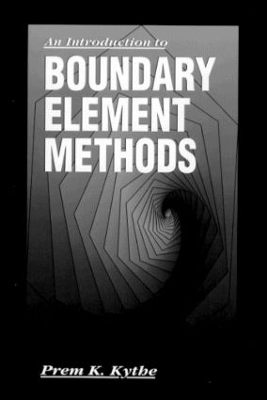
An Introduction to Boundary Element Methods
Seiten
1995
Crc Press Inc (Verlag)
978-0-8493-7377-0 (ISBN)
Crc Press Inc (Verlag)
978-0-8493-7377-0 (ISBN)
This book describes the derivation of some fundamental solutions which in themselves are very helpful and valuable to lay the foundation for the theory of boundary element methods. It examines the two-dimensional potential problems, involving the Laplace and the Poisson equations.
The finite element and the boundary element methods are the two most important developments in numerical mathematics to occur in this century. Many engineering and mathematics graduate curricula now include a course in boundary element methods. Such a course must cover numerical methods, basic methodology to real problems, and interactive computer usage. Both theory and applications, necessary for applied courses, are available in this new textbook.
An Introduction to Boundary Element Methods is logically organized and easy to read. The topics are carefully selected and meticulously presented. Applications are described for use in identifying potential problems and for heat transfer, diffusion equations, linear elasticity, water waves, ocean acoustics, acoustic scattering, aerodynamics, porous media, and simple laminar flows.
More than 20 computer subroutines help develop and explain the computational aspect of the subject. Hundreds of figures, exercises, and solved examples supplement text and help clarify important information.
The computer programs have been tested on some benchmark problems. Even in single precision the results are more accurate and better than those obtained from available Fortran programs.
The finite element and the boundary element methods are the two most important developments in numerical mathematics to occur in this century. Many engineering and mathematics graduate curricula now include a course in boundary element methods. Such a course must cover numerical methods, basic methodology to real problems, and interactive computer usage. Both theory and applications, necessary for applied courses, are available in this new textbook.
An Introduction to Boundary Element Methods is logically organized and easy to read. The topics are carefully selected and meticulously presented. Applications are described for use in identifying potential problems and for heat transfer, diffusion equations, linear elasticity, water waves, ocean acoustics, acoustic scattering, aerodynamics, porous media, and simple laminar flows.
More than 20 computer subroutines help develop and explain the computational aspect of the subject. Hundreds of figures, exercises, and solved examples supplement text and help clarify important information.
The computer programs have been tested on some benchmark problems. Even in single precision the results are more accurate and better than those obtained from available Fortran programs.
Kythe/, Prem K.
Introduction 1. Mathematical Preliminaries 2. Variation and Weighted Residual Methods 3. One-Dimensional Problems 4. Fundamental Solutions 5. Potential Problems 6. Linear Elasticity 7. Ocean Acoustics and Helmholtz Equation 8. Some Fluid Flows and D'Arcy Equation 9. Domain Integrals 10. Transient Problems
| Erscheint lt. Verlag | 13.4.1995 |
|---|---|
| Reihe/Serie | Symbolic & Numeric Computation |
| Verlagsort | Bosa Roca |
| Sprache | englisch |
| Maße | 156 x 234 mm |
| Gewicht | 766 g |
| Einbandart | gebunden |
| Themenwelt | Mathematik / Informatik ► Mathematik ► Analysis |
| Mathematik / Informatik ► Mathematik ► Angewandte Mathematik | |
| ISBN-10 | 0-8493-7377-8 / 0849373778 |
| ISBN-13 | 978-0-8493-7377-0 / 9780849373770 |
| Zustand | Neuware |
| Haben Sie eine Frage zum Produkt? |
Mehr entdecken
aus dem Bereich
aus dem Bereich
Buch | Softcover (2024)
De Gruyter Oldenbourg (Verlag)
CHF 83,90


